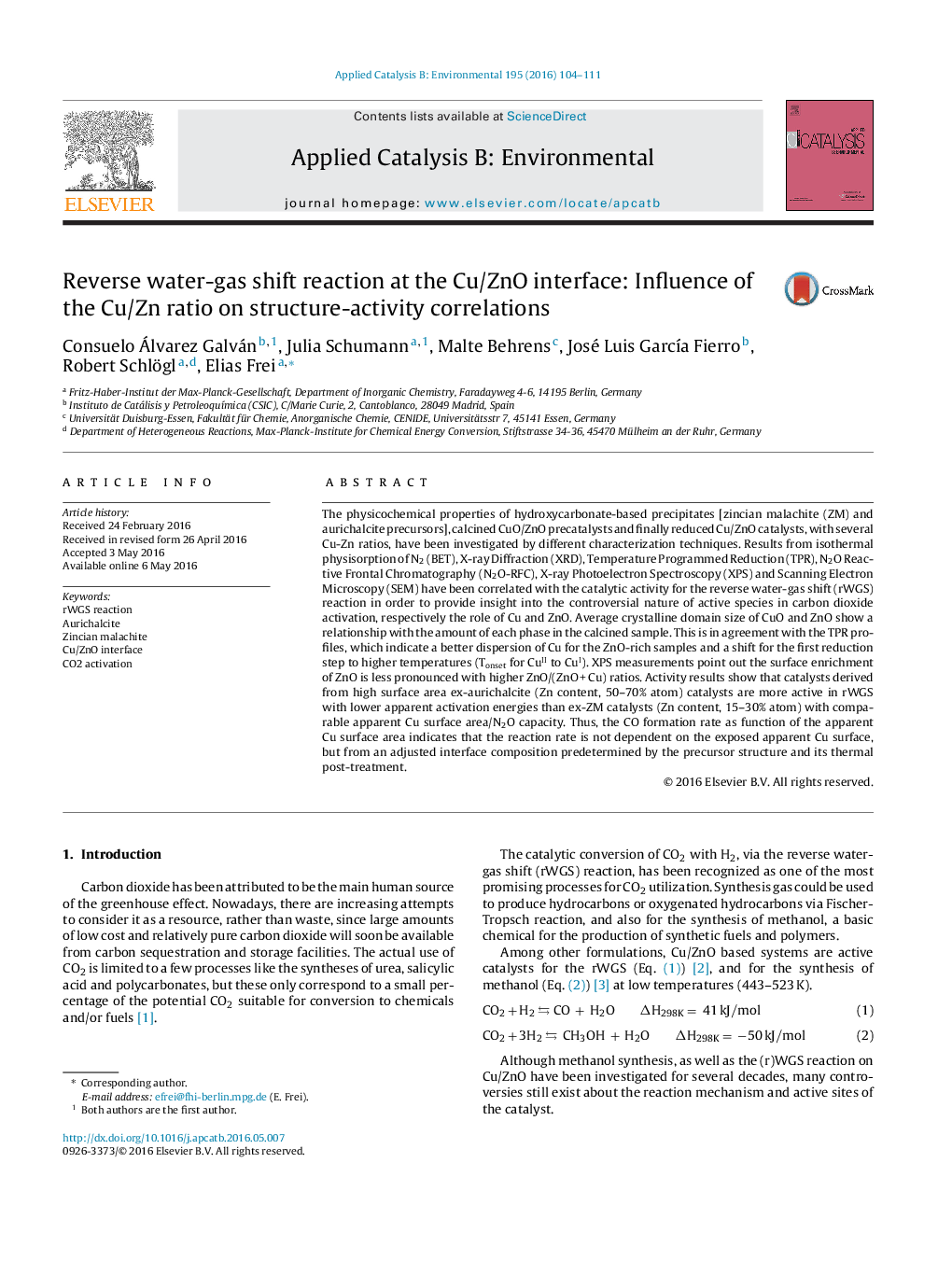| کد مقاله | کد نشریه | سال انتشار | مقاله انگلیسی | نسخه تمام متن |
|---|---|---|---|---|
| 44773 | 46347 | 2016 | 8 صفحه PDF | دانلود رایگان |

• Linear correlations of the TPR profiles to the d-value of the (20-1) reflex of the zincian malachite derived pre-catalysts.
• The trends of the CO formation rate and the apparent activation energies show that similar proportions of Cu to Zn are important derived from aurichalcite precursors.
• The apparent Cu-SA is not the key parameter for the rWGS activity.
• A Cu/ZnO interface that is properly enriched with ZnO provides the best activity and lowest apparent activation energy.
• Experimental evidence for different rate determining steps of the rWGS and methanol reaction.
The physicochemical properties of hydroxycarbonate-based precipitates [zincian malachite (ZM) and aurichalcite precursors], calcined CuO/ZnO precatalysts and finally reduced Cu/ZnO catalysts, with several Cu-Zn ratios, have been investigated by different characterization techniques. Results from isothermal physisorption of N2 (BET), X-ray Diffraction (XRD), Temperature Programmed Reduction (TPR), N2O Reactive Frontal Chromatography (N2O-RFC), X-ray Photoelectron Spectroscopy (XPS) and Scanning Electron Microscopy (SEM) have been correlated with the catalytic activity for the reverse water-gas shift (rWGS) reaction in order to provide insight into the controversial nature of active species in carbon dioxide activation, respectively the role of Cu and ZnO. Average crystalline domain size of CuO and ZnO show a relationship with the amount of each phase in the calcined sample. This is in agreement with the TPR profiles, which indicate a better dispersion of Cu for the ZnO-rich samples and a shift for the first reduction step to higher temperatures (Tonset for CuII to CuI). XPS measurements point out the surface enrichment of ZnO is less pronounced with higher ZnO/(ZnO + Cu) ratios. Activity results show that catalysts derived from high surface area ex-aurichalcite (Zn content, 50–70% atom) catalysts are more active in rWGS with lower apparent activation energies than ex-ZM catalysts (Zn content, 15–30% atom) with comparable apparent Cu surface area/N2O capacity. Thus, the CO formation rate as function of the apparent Cu surface area indicates that the reaction rate is not dependent on the exposed apparent Cu surface, but from an adjusted interface composition predetermined by the precursor structure and its thermal post-treatment.
Figure optionsDownload as PowerPoint slide
Journal: Applied Catalysis B: Environmental - Volume 195, 15 October 2016, Pages 104–111